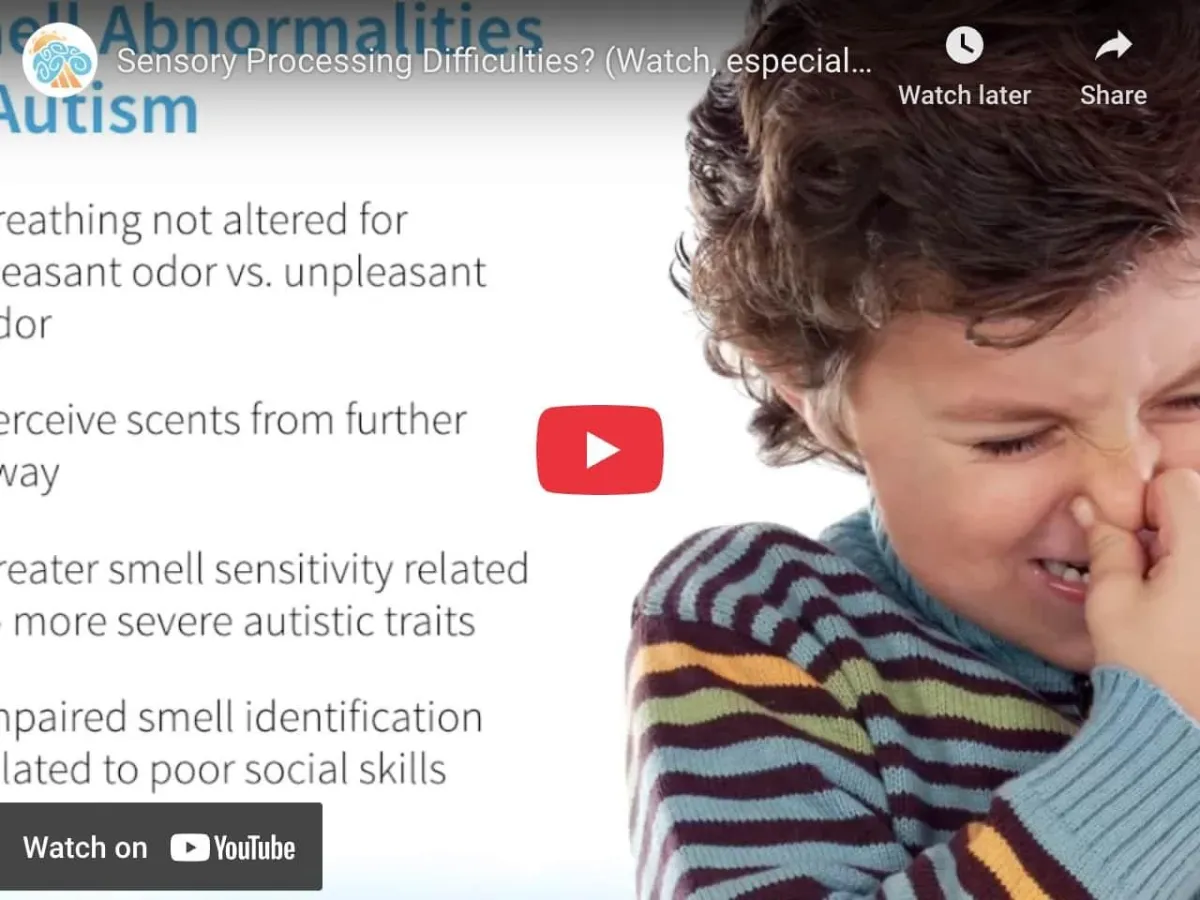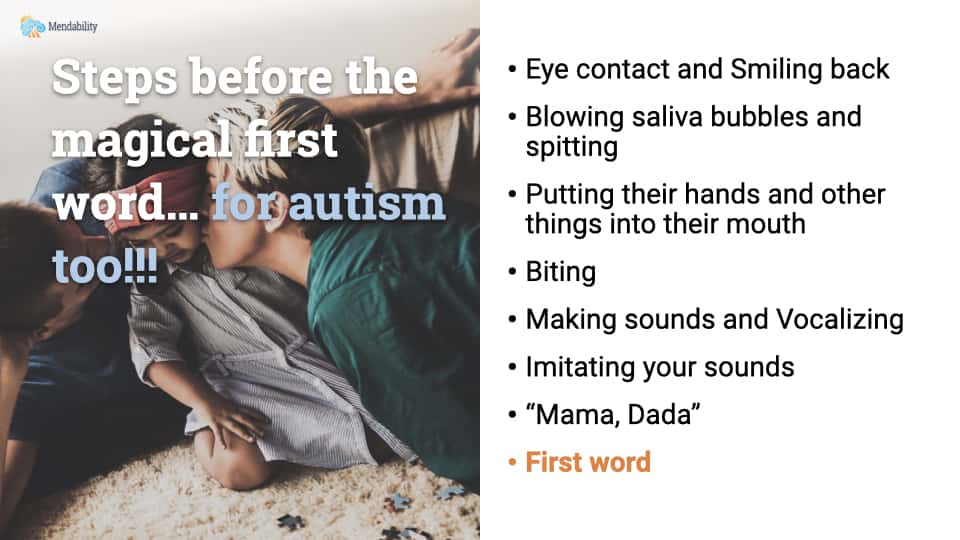
Labeling food as ‘good’ or ‘bad’ impacts how children see themselves
Table of Contents
The Unexpected Weight of "Good" and "Bad" Food Labels
Have you ever caught yourself saying, “Eat your vegetables, they’re good for you” or “Stay away from candy, it’s bad”?
It’s a common way to teach children about healthy eating, but have you considered the emotional weight of these labels?
Anne Poirier, intuitive eating counselor and author of The Body Joyful, reveals how labeling food as "good" or "bad" does more than just guide choices—it shapes how children see themselves.
“Labeling food as ‘good’ or ‘bad’ impacts how children see themselves,” Anne shares. “If they eat what’s labeled ‘bad,’ they internalize that and may feel bad about themselves.”
For children with autism or other neurological conditions, who already face challenges with self-esteem, this becomes even more critical.
Neuroscience teaches us that early emotional experiences are encoded in the brain’s wiring, which can affect a child’s lifelong relationship with food.
This is especially true for children whose sensory sensitivities make eating more complex.
Read more about the role of sensory enrichment therapy in autism treatment.
YouTube embed and podcast embed go here.
How Parental Beliefs About Food Shape a Child’s Perspective
Parental beliefs about food often shape the entire family’s eating habits, sometimes in ways parents don’t realize.
Anne describes how these beliefs can create unnecessary stress for children:
“Parents often transfer their own food beliefs onto their children, creating unnecessary stress,” Anne explains. “Children grow up thinking they have to avoid ‘bad’ foods or eat ‘good’ foods to be accepted.”
This is especially problematic for children with developmental delays or sensory sensitivities, as the pressure to conform can exacerbate anxiety.
Parents might unintentionally project their own dieting habits or food restrictions, leading children to feel confused or even rebellious about food choices.
Instead of saying, “You shouldn’t eat that,” try asking, “What do you feel like eating today?”
This shift empowers children to explore their own preferences and helps reduce stress at mealtimes.
Releasing the “Shoulds” for a Healthier Food Relationship
Anne encourages parents to notice how often they use the word "should" around food.
“Pay attention to how often you say ‘should’ when making food choices—it’s a clue about your relationship with food,” Anne says.
This simple awareness can transform not just the way parents approach food, but also how they model behavior for their children.
For instance, instead of saying, “You should eat broccoli,” you could say, “Let’s try something green today. How about broccoli or green beans?”
This shift creates opportunities for children to feel empowered rather than pressured.
Research supports that autonomy in choices fosters resilience and better emotional regulation in children (Source).
Why Sensory Sensitivities Make Food Choices Extra Tricky
For children with autism, food isn’t just about taste—it’s about texture, smell, and even color.
Claudie Pomares, creator of Sensory Enrichment Therapy, explains:
“Some children will only eat white foods or refuse anything slimy. These preferences aren’t rational—they’re reflexive responses rooted in sensory processing.”
This makes traditional feeding therapy methods, which often rely on repetitive exposure, stressful for some children.
Instead, sensory enrichment approaches tap into brain plasticity to help children feel safer exploring new foods.
Learn how sensory enrichment fosters brain development.
Turning Food Into Play to Reduce Stress
One of the most innovative ideas from the episode came from Claudie, who suggests turning food into a playful experience.
“Turn meal prep into play,” Claudie says. “Use rice as a base, celery as trees, and beans as stones to create a landscape your child can explore.”
This approach removes the pressure to eat while building positive associations with food.
Play-based methods also activate the brain’s reward system, making the experience enjoyable and helping reduce food-related anxiety (Source).
Small Steps Parents Can Take Today
If this feels overwhelming, don’t worry. Both Anne and Claudie offer practical tips to get started:
Shift your language: Replace “should” with “could” or “let’s try.”
Offer choices: Present two options to give your child autonomy.
Play with food: Make it about fun, not eating. Build landscapes or explore textures together.
Relax about labels: Focus on nourishment, not morality.
Anne reminds us:
“When parents relax about food, the whole family benefits. It creates a calmer atmosphere that allows children to develop a healthier relationship with food.”
For families of children with special needs, these small changes can lead to big shifts in reducing mealtime stress and fostering a positive home environment.
As you experiment with these strategies, remember that the goal isn’t perfection—it’s connection.
By modeling curiosity and compassion, you’re helping your child build not just better eating habits, but also a more confident sense of self.
Interview Transcript
Kim: Welcome to Season 2 of the Happy Sensory Corner podcast. At Mendability, we want to help everyone, especially when they're vulnerable, to feel happier, more comfortable in their own skin, and more confident so they can be their true selves. Our contribution is to work on brain health. As our brains grow stronger and healthier, all of us benefit, but especially those among us who struggle to sleep, who are overwhelmed by the barrage of information from the environment, who struggle with their bodies, with abstractions, or in the case of today's episode, with eating. I'm really excited to introduce our guest.
Kim: Our guest is Anne Poirier. She is the founder of Shaping Perspectives, a certified eating disorder specialist, an intuitive eating counselor, and a self-talk trainer. Anne has dedicated her career to helping individuals, particularly women, break free from the harmful cycle of diet culture and develop a healthier relationship with food and their bodies. Anne, I see here that you've also written a book, The Body Joyful, that chronicles your own journey from self-loathing to self-acceptance. It's clear to me that your personal experience has shaped the compassionate way you work with clients, and I know it's something that our listeners—parents of children with developmental challenges—will really connect with. You've been featured in major publications like Eating Well and The Huffington Post, which speaks volumes about the impact of your work. I'm excited to dive into how your approach can help families dealing with restrictive eating, sensory issues, and more.
Anne: Thank you so much for having me. It's a pleasure to be here and speaking to your audience. My journey with food and eating in my body—my negative journey—started when I was very young. I always think about being called a nickname when I was a kid. Nicknames can be harmful, and they can hurt. Because of the nickname that my brother gave me and his friends, I internalized that my body was wrong. I went on a very long disordered journey with food and eating.
Anne: I started in fifth and sixth grade realizing that my body was different. I just started to eat less and less and less and ended up with an eating disorder as a tween, a 12-year-old. My journey with food followed me for decades until I was about 48. That was when I decided I needed to make some changes. I was either restricting food or binging food, always trying to change my body, always trying to change myself, never feeling good enough. Those feelings of self-loathing impacted all the decisions and choices I made around food. That's what led me to this career change in my midlife. I wanted to help other people not have to go through the struggles I went through for so many years.
Kim: This is why I felt you'd be a fantastic guest on our podcast. I feel like our parents, who have children with developmental delays and neurological differences, are dealing with challenges that affect how their children behave around food. They may find some foods delicious, but their children find them atrocious because of the way they feel or taste. Food becomes a battleground where parents, with their child's best interests in mind, think, "This piece of broccoli with all its vitamins and nutrients needs to go into my child’s body."
Kim: I thought your personal experience and expertise around building a healthy relationship with food would be really useful. Maybe there are some myths we can debunk and some approaches we can explore.
Anne: There are so many beliefs we grow up with around food and eating, like "we should be eating this" or "we shouldn’t eat that." I talk a lot about the “shoulds.” When parents start questioning those beliefs, they can approach each child individually and see what their journey with food will be like.
Kim: Is there a typical misunderstanding or myth around food that's your favorite to address when working with clients?
Anne: The biggest one is how we place morality on food—labeling it as good or bad, clean or dirty. That’s the biggest myth. Yes, there are foods that might be more nutritious, but the most important thing is ensuring we're eating and getting what we need to live the lives we want.
Kim: How does placing morality on food impact a child's relationship with food?
Anne: If we label food as good or bad, children may grow up thinking they're good or bad based on what they eat. It creates a lot of unnecessary pressure and even rebellion. A child might think, "Don’t tell me what to eat; I can eat what I want." For example, children who grow up without sweet cereals at home may binge on them at a friend’s house. That restrictiveness can lead to disordered eating behaviors.
Claudie: I like that. Parents often push certain foods more than others. Even when offering choices, they might unconsciously favor one food. Children can sense that pressure.
Anne: Exactly. How do we make food exploration about curiosity and enjoyment instead of pressure? If we can do that, children develop a healthier relationship with food.
Kim: I’ve seen this too, even in my own family. As a parent, I know we sometimes push foods we think are “right.” But how can we balance that with giving children freedom to explore their preferences?
Anne: It starts with awareness. Notice how often you say “should.” For example, if you go to a restaurant and see something you want to order, but then think, “I should get the salad,” that’s a red flag about your own relationship with food. The same applies when talking to children. Instead of saying, “You should eat this,” try asking, “What do you feel like eating today?” That shift can reduce stress and create a more positive atmosphere around meals.
Claudie: That’s so important, especially for parents of children with autism or sensory sensitivities. Some kids refuse foods based on texture or color—like only eating white foods or avoiding slimy textures. These aren’t rational choices; they’re reflexive responses from the brain.
Kim: That makes sense. I imagine it must feel frustrating for parents who are trying so hard to get their children to eat nutritious meals, but the child refuses.
Claudie: Exactly. For these children, food isn’t just about taste. It’s about sensory experiences—how it feels, smells, and even looks. That’s why I encourage parents to take a sensory approach. For example, if a child avoids green foods, try creating a playful landscape on their plate. Use rice as the base, celery as trees, and beans as stones. The goal isn’t to eat but to explore. This helps reduce the anxiety associated with food.
Anne: I love that. Making food exploration fun and stress-free is so important. Parents can also model curiosity by trying new foods themselves.
Kim: What about parents who feel their child’s diet is too restricted? For example, maybe the child only eats chicken nuggets or white bread. How can they expand their child’s diet without creating more stress?
Anne: Start by identifying the child’s preferences—temperature, texture, flavor. If they like crunchy foods, try offering different crunchy options. If they like sweet foods, you might try smoothies with hidden nutrients like spinach or avocado. The idea is to work within the child’s comfort zone while gently introducing variety.
Claudie: I had a parent whose child would only eat a specific brand of gluten-free chicken nuggets. The parent was a fantastic cook but had stopped offering the family’s traditional Persian dishes because she assumed the child wouldn’t eat them. I suggested she try serving those foods again. To her surprise, the child loved them. Sometimes, we underestimate the power of cultural and family foods to engage a child’s senses.
Anne: That’s such a great point. Food is emotional, and shared meals can create positive associations. It’s about removing the pressure and focusing on connection.
Kim: That resonates with me. As parents, we often carry our own anxieties about food into our interactions with our children. How can we recognize and address that?
Anne: Awareness is the first step. Ask yourself, “Am I projecting my own beliefs or anxieties onto my child?” For example, if you’re on a restrictive diet, your child might pick up on that and feel pressure to eat the same way. It’s important to separate your own food choices from what’s best for your child.
Kim: That’s powerful. It reminds me of something you said earlier about the ripple effect—how a parent’s relationship with food can influence the entire family.
Anne: Absolutely. When parents relax about food, the whole family benefits. It creates a calmer atmosphere where children feel safe to explore and make their own choices.
Claudie: And that’s where sensory enrichment can play a role. By engaging multiple senses, we can help children feel more comfortable with new foods and reduce anxiety.
Kim: I love that connection between sensory enrichment and food. Are there any final thoughts or stories you’d like to share?
Anne: I worked with a mom who had struggled with her own body image for years. As she started healing her relationship with food, she noticed a change in her children. Mealtimes became less stressful, and her kids started trying new foods without being pushed. It’s a reminder that the work we do on ourselves can have a profound impact on our families.
Kim: That’s such an encouraging story. Thank you, Anne, for sharing your expertise and for giving our listeners so much to think about. And thank you, Claudie, for connecting these ideas to sensory enrichment.
Anne: Thank you for having me. It’s been a pleasure.
Claudie: Thank you, Anne.



